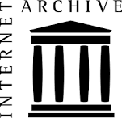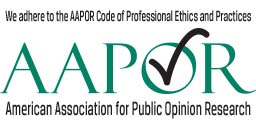Modeling and Analysis of Bus Scheduling Systems of Public Bus Transport in Aqaba Special Economic Zone Authority
DOI:
https://doi.org/10.25255/jbm.2019.7.2.137.161Palavras-chave:
Bus Scheduling Systems, Public Bus Transport, Aqaba, JordanResumo
Aqaba Special Economic Zone Authority (ASEZA) City Bus Service is the only public enterprise that provides transport services in and around the city of Ababa. The city uses a fixed bus schedule system to serve passengers in 15 routes with buses (89) bus. However, this type of bus assignment system created a problem in the operational and financial performances. The objective of this paper is to develop an optimum bus assignment method using Linear Programming (LP). After thorough analysis of the existing bus scheduling system, the LP model is developed and used to determine the optimal number of buses for each route in four shifts. The output of the LP-model is then validated with the performances of the existing systems. The findings of the study show that There is a positive effect bus utilization on reduce cost in public transportation, there is a positive effect total number of trips made on reduce cost in public transportation, There is a positive effect total distance travelled on reduce cost in public transportation, There is a positive effect various operating costs on reduce cost in public transportation. The researcher recommended the (ASEZA) to adopt the new bus assignment system so that buses can be assigned based on the demand distribution of passengers for each route at a given shift.
Downloads
Referências
2. B. Stefan. “An overview of scheduling models in De-cision Support & Operations Research Lab”, University of Paderborn, Warburger, Germany, 2002.
3. S. Das, A. Mukhopadhyay, A. Roy, A. Abraham and Bijaya Panigrahi, Exploratory Power of the Harmony Search Algorithm: Analysis and Improvements for Global Numerical Optimization, IEEE Transactions on
4. H. Liu, A. Abraham and M. Clerc, Chaotic Dynamic Characteristics in Swarm Intelligence, Applied Soft Computing Journal, Elsevier Science, Volume 7, Issue 3, pp. 1019-1026, 2007.
5. A. Abraham, Intelligent Systems: Architectures and Perspectives, Recent Advances in Intelligent Paradigms and Applications, Abraham A., Jain L. and Kacprzyk J. (Eds.), Studies in Fuzziness and Soft Computing, Springer Verlag Germany, ISBN 3790815381, Chapter 1, pp. 1-35, 2002.
6. S. Das, A. Biswas, S. Dasgupta and A. Abraham, Bacterial Foraging Optimization Algorithm: Theoretical Foundations, Analysis, and Applications, Foundations of Computational Intelligence Volume 3: Global Optimization, Studies in Computational Intelligence, Springer Verlag, Germany, ISBN: 978-3-642-01084-2, pp. 23-55, 2009.
7. F. Xhafa and A. Abraham, Meta-heuristics for Grid Scheduling Problems, Metaheuristics for Scheduling: Distributed Computing Environments, Studies in Computational Intelligence, Springer Verlag, Germany, ISBN: 978-3-540-69260-7, pp. 1-37, 2008.
8. A. Wren and D. Wren. “A genetic algorithm for public transport driver scheduling”, Computers and Operations Research, 1995.
9. F. Daganzo. “A dynamic approach to eliminate bus bunching”, Transportation research Part B, 2009.
10. F. Salzborn. “Optimal Bus Scheduling”, Transportation Science, 6(2), 137-148, 1972.
11. G. Clarke and J. Wright.” Scheduling of vehicles from a central depot to a number of delivery points”, OperationsResearch 12, 568-581, 1964.
12. G. Dantzig and J.H. Ramser. “The truck dispatching problem”, Journal of Management Science, Management Science 6(1), 80-91, 1959.
13. G. Clarke and J. Wright.” Scheduling of vehicles from a central depot to a number of delivery points”, Operations Research 12, 568-581, 1964.
14. G. Laporte, F. Louveaux, H. and Mercure. “Models and exact solutions for a class of stochastic location-routing problems”, European Journal of Operational Research.
15. H. Calvete, G. Carmen, O. Mara, Jos, and V. Beln,Snchez, “Vehicle routing problems with soft time windows: an optimization based approach”, Journal of Monografas del Seminario Matemtico Garca de Galdeano 31, 295-304, 2004.
16. J. Beasley, and B. Cao. “A tree search algorithm for the crew scheduling problem”, European Journal of Operational ResearchI, 1996.
17. Snchez, “Vehicle routing problems with soft time windows: an optimization-based approach”, Journal of Monografas del Seminario Matemtico Garca de Galdeano 31, 295-304, 2004.
18. J. Christopher, Goodson. “Solutions Methodologies for VRP with Stochastic Demand”, Dissertation, University of Iowa, 2010.
19. M. Fischetti, A. Lodi, S. Martello and P. Toth ” A polyhedral approach to simplified crew and vehicle scheduling problems”, Management Science, 27, No. 6, 1-18, 2001.
20. R. Freling, C. Boender, and J. Pinto. An IntegratedApproach to Vehicle and Crew Scheduling. ErasmusUniversity Rotterdam, Econometric Institute, 1995.
21. Y. Shangyao, T. Ching-Hui and F. Tseng-Chih. “An airline scheduling model and solution algorithms under stochastic demands”, European Journal of Operation Research, 190, 22-39, 2008.
22. A. Wren and D. Wren. “A genetic algorithm for public transport driver scheduling”, Computers and Operations Research, 1995.
23. B. Stefan. “An overview of scheduling models in De-cision Support & Operations Research Lab”,University of Paderborn, Warburger, Germany, 2002.
24. J. Beasley, and B. Cao. “A tree search algorithm for the crew scheduling problem”, European Journal of Operational ResearchI, 1996.
25. M. Fischetti, A. Lodi, S. Martello and P. Toth ” A polyhedral approach to simplified crew and vehicle scheduling problems”, Management Science, 27, No. 6, 1-18, 2001.
26. R. Freling, C. Boender, and J. Pinto. An Integrated Approach to Vehicle and Crew Scheduling. Erasmus University Rotterdam, Econometric Institute, 1995.
27. S. Mehmet, A. Mawada and A. Jafar. “Scheduling and Routing of City Buses at Kuwait Public Transport”, International Journal of Applied Operational Research, 1(3), 11-32, 2012.
28. B. Shlifer and G. Gavish. “An approach for solving a class of transportation scheduling problems”, European Journal of Operational Research, 3, 122-134, 1978.
29. F. Daganzo. “A dynamic approach to eliminate bus bunching”, Transportation research Part B, 2009.
30. L. Fu and X. Yang. “Design and Implementation of Bus–Holding Control Strategies with Real-Time Information”, Transportation Research Record: Journal of the Transportaion Research Board, (1791), 6-12, TRB, National Rreseafch Council, Washington, D.C., 2002.
31. M. Dessouky, A. Nowroozi, and K. Mourikas. “Bus dispatching at timed transfer transit stations using bus tracking technology” University of Southern California, Department of Industrial and Systems Engineering, 1999.
32. N. Kliewer. “A time space network based exact optimization model for multi-depot bus scheduling”, 175, No. 3, pp.80-87, 2006.
33. N. Van Oort, M. Boterman and D. Van Nes. “Effect of driving-time determination and holding points on reliability”, Conference on Advanced Systems for Public Transport. Hong Kong, 2009.
34. S. Mehmet, A. Mawada and A. Jafar. “Scheduling and Routing of City Buses at Kuwait Public Transport”, International Journal of Applied Operational Research, 1(3), 11-32, 2012.
35. www.aseza.jo.







 a Creative Commons Attribution 4.0 International License.
a Creative Commons Attribution 4.0 International License.